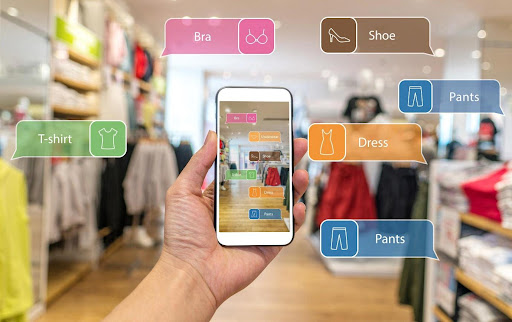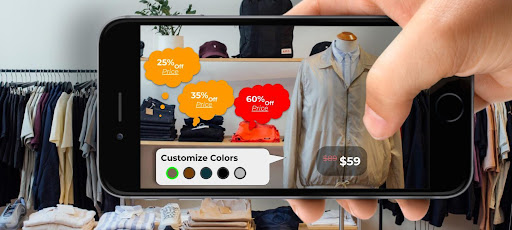
In the vibrant metropolis of Melbourne, Australia, the retail and e-commerce landscape is undergoing a transformative revolution, driven by the immersive technology of Augmented Reality (AR). This dynamic fusion of the physical and digital realms has unleashed a wave of innovation, redefining the way businesses engage with their customers and enhancing the shopping experience like never before.
Augmented Reality, often abbreviated as AR, has emerged as a powerful tool for retailers and e-commerce platforms, bridging the gap between the online and offline worlds. In this digital era, AR offers consumers in Melbourne and beyond the opportunity to interact with products in a whole new dimension, allowing for virtual try-ons, interactive product demonstrations, and personalised shopping experiences that were once inconceivable.
In this exploration of “The Impact of Augmented Reality on Retail and E-commerce,” we will delve into the myriad ways in which AR is reshaping the retail landscape in Melbourne, revolutionising consumer engagement, boosting sales, and propelling businesses into a new era of customer-centric commerce.
Importance Of AR In Retail and E-Commerce
Augmented Reality (AR) technology has emerged as a game-changer in the retail and e-commerce landscape in Melbourne, Australia. Its importance cannot be overstated in enhancing the customer experience and driving sales.
Firstly, AR allows customers to visualise products in their real-life surroundings before making a purchase. Shoppers can try on clothes virtually, place furniture in their homes, or see how makeup looks on their faces, boosting their confidence in buying decisions.
Furthermore, AR enhances engagement. Interactive AR experiences, like virtual try-ons or product demonstrations, captivate customers, making shopping more fun and memorable. This has the potential to foster greater brand loyalty and encourage repeat business.
In a highly competitive market like Melbourne, staying ahead is crucial. AR technology not only differentiates businesses but also fosters innovation and adaptability. Whether it’s creating immersive in-store experiences or offering AR-powered apps, embracing this technology is a strategic move to thrive in the retail and e-commerce sectors.
The Evolution of Shopping
Shopping has come a long way since the days of bartering in bustling bazaars. In the vibrant city of Melbourne, Australia, the evolution of shopping has been particularly notable, with traditional brick-and-mortar stores facing a formidable challenger in the form of online shopping. Moreover, the introduction of Augmented Reality (AR) in the retail landscape has added a new dimension to the shopping experience, transforming how consumers interact with products, especially in sectors like furniture and services.
Traditional Shopping vs. Online Shopping:
Traditional shopping, with its tactile appeal and in-person customer service, has long been a cornerstone of the shopping experience. Melbourne boasts a rich tradition of bustling shopping districts like Bourke Street Mall and Chapel Street, where shoppers can immerse themselves in the city’s vibrant atmosphere. However, the rise of online shopping has reshaped the retail landscape. With the convenience of shopping from home and a seemingly endless array of products at their fingertips, consumers have flocked to online platforms.
Introduction of AR in Retail:
The introduction of AR technology has revolutionised traditional shopping in Melbourne and beyond. AR overlays digital information onto the physical world, creating a seamless blend of the virtual and real. In the retail sector, AR allows customers to visualise products in their own space before making a purchase decision.
Benefits of AR in Transforming the Shopping Experience:
- Enhanced Product Visualisation: AR in furniture shopping, for instance, enables customers to see how a new piece of furniture would fit and look in their homes. This helps in making more informed decisions, reducing the likelihood of disappointment upon delivery.
- Interactive Shopping: AR-powered services engage customers in interactive experiences, making shopping more enjoyable. For instance, beauty retailers in Melbourne can offer AR-powered virtual makeup try-ons, allowing customers to experiment with different looks before buying cosmetics.
- Reduced Returns: By allowing customers to virtually try products before purchase, AR helps reduce the rate of product returns. This is particularly beneficial for retailers in terms of cost savings and improving overall customer satisfaction.
- Personalised Shopping: Augmented technology can also provide personalised recommendations based on user preferences and browsing history. This enhances the shopping experience by making it more personalised and streamlined.
- Convenience: AR services can bridge the gap between the convenience of online shopping and the sensory experience of traditional shopping. Customers can explore products virtually, eliminating the need to travel to physical stores.
In Melbourne, retailers have embraced AR technology, enhancing the shopping experience across various sectors. Whether it’s trying out furniture in your living room or virtually experiencing a service, Augmented Reality is transforming the way Melburnians shop.
Enhancing the Customer Experience
In the bustling retail and e-commerce landscape of Melbourne, Australia, businesses are constantly seeking innovative ways to captivate their customers and provide unforgettable shopping experiences. Augmented Reality (AR) has emerged as a game-changer, revolutionising the way consumers engage with products and services. Here, we delve into how AR business solutions are elevating the customer experience in Melbourne’s retail and e-commerce sectors.
Virtual Try-Ons for Fashion and Cosmetics: Melbourne’s fashion and cosmetics retailers are leveraging AR to allow customers to virtually try on clothing and makeup products. Shoppers can now visualise themselves wearing different outfits or experimenting with makeup styles before making a purchase, enhancing their confidence in their choices.
Visualising Products in Real-World Settings: AR enables customers to visualise products in their own homes or surroundings before buying. Whether it’s furniture, home decor, or electronics, AR allows customers to assess the product’s fit and appearance in their specific environment, reducing the risk of disappointment upon delivery.
Interactive and Immersive Product Demonstrations: Melbourne retailers are using AR to create interactive and immersive product demonstrations. Customers can use their smartphones or AR glasses to access additional information, videos, and interactive features about the products, leading to a deeper understanding and connection with the offerings.
Personalised Shopping Recommendations through AR: AR-driven algorithms analyse customer preferences and behaviours to provide highly personalised shopping recommendations. This tailored approach ensures that customers discover products that align with their unique tastes and needs, fostering brand loyalty.
As Melbourne’s retail and e-commerce sectors continue to evolve, AR business solutions are at the forefront, delivering exceptional customer experiences. By offering virtual try-ons, real-world visualisations, interactive demonstrations, and personalised recommendations, businesses in Melbourne are not only staying competitive but also enriching the shopping journey for their customers. Embracing AR technology is undoubtedly a winning strategy for those seeking to thrive in Melbourne’s dynamic retail and e-commerce landscape.
Boosting Sales and Conversions
In the vibrant retail and e-commerce landscape of Melbourne, Australia, the integration of Augmented Reality (AR) has emerged as a game-changer, significantly boosting sales and conversions. Here, we delve into the key facets of this technological revolution:
Reducing Purchase Hesitation: AR allows consumers to visualise products in their own space, reducing purchase hesitation. Shoppers can virtually try on clothing, place furniture in their homes, or test makeup products, enhancing their confidence in buying. This immersive experience bridges the gap between the online and in-store shopping, vital in a post-pandemic world.
Increasing Customer Engagement: AR adds an interactive layer to the shopping experience. Retailers can deploy AR apps to engage customers with gamified experiences, exclusive discounts, and personalised recommendations. Customers who are actively involved are more inclined to convert and evolve into enthusiastic brand promoters.
Data-Driven Insights and Analytics: Melbourne businesses benefit from AR’s data collection capabilities. By tracking user interactions and preferences, retailers can gain valuable insights into customer behaviour. This data fuels informed decisions, from inventory management to marketing strategies, ultimately optimising sales and operations.
Augmented Reality in business, especially in Melbourne’s dynamic retail and e-commerce sectors, offers a multifaceted approach to increasing sales and conversions. By reducing purchase hesitation, increasing customer engagement, and leveraging data-driven insights, businesses are poised to thrive in this tech-driven era, providing an innovative and immersive shopping experience to their clientele.
Overcoming Challenges and Concerns
- Consumer Adoption: Encouraging consumers in Australia to embrace Augmented Reality (AR) in retail and e-commerce can be challenging due to the need for compatible devices and AR apps.
- Cost of Implementation: AR development and integration can be costly for retailers, particularly small businesses. Finding cost-effective solutions is crucial.
- Technical Infrastructure: Ensuring a robust network infrastructure to support AR applications, especially in remote areas of Australia, is a concern.
- Privacy and Security: Handling sensitive customer data in AR shopping experiences raises privacy and security concerns. Compliance with Australian data protection laws is essential.
In conclusion, the impact of augmented reality (AR) on retail and e-commerce has been transformative. AR has revolutionised the way consumers shop, offering immersive and interactive experiences that bridge the gap between physical and online retail. By allowing customers to visualise products in their own space before purchase, AR enhances confidence and reduces the likelihood of returns, thereby improving customer satisfaction and operational efficiency. Moreover, AR-powered marketing campaigns have proven to be highly engaging and effective, driving sales and brand loyalty. Retailers and e-commerce platforms that have embraced AR technology have gained a competitive edge in a crowded marketplace. As AR continues to evolve and become more accessible, its influence on retail and e-commerce is set to grow, reshaping the industry and providing exciting opportunities for businesses to connect with consumers in innovative ways.



